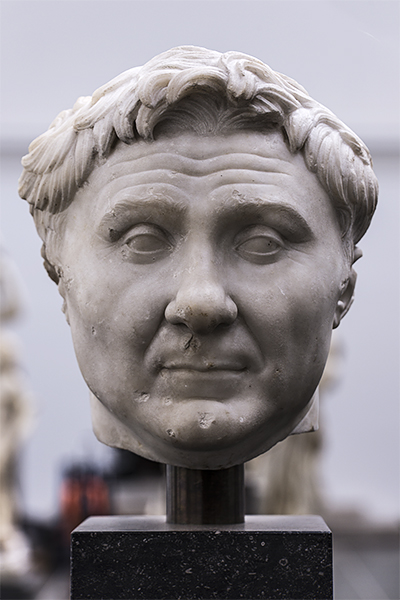
"The splendor and magnificence of Pompey's triumph was such that though it took up the space of two days, yet they were extremely straitened in time, so that of what was prepared for that pageantry, there was as much withdrawn as would have set out and adorned another triumph. In the first place, there were tables carried, inscribed with the names and titles of the nations over whom he triumphed, Pontus, Armenia, Cappadocia, Paphlagonia, Media, Colchis, the Iberians, the Albanians, Syria, Cilicia, and Mesopotamia, together with Phoenicia and Palestine, Judaea, Arabia, and all the power of the pirates subdued by sea and land. And in these different countries there appeared the capture of no less than one thousand fortified places, nor much less than nine hundred cities, together with eight hundred ships of the pirates, and the foundation of thirty-nine towns. Besides, there was set forth in these tables an account of all the tributes throughout the empire, and how that before these conquests the revenue amounted but to fifty millions, whereas from his acquisitions they had a revenue of eighty-five millions; and that in present payment he was bringing into the common treasury ready money, and gold and silver plate, and ornaments, to the value of twenty thousand talents, over and above what had been distributed among the soldiers, of whom he that had least had fifteen hundred drachmas for his share....But that which seemed to be his greatest glory, being one which no other Roman ever attained to, was this, that he made his third triumph over the third division of the world. For others among the Romans had the honor of triumphing thrice, but his first triumph was over Africa, his second, over Europe, and this last, over Asia; so that he seemed in these three triumphs to have led the whole world captive."
Plutarch, Life of Pompey (trans. Dryden)
Aware of the symbolic importance of birthdays, Pompey deliberately planned his triumph of 61 BC to coincide with his forty-fifth birthday on September 29, actually waiting seven months after returning from the East to enter Rome (Pliny, XXXVII.13). Appian relates that "Pompey himself was borne in a chariot studded with gems, wearing, it is said, the cloak of Alexander the Great, if any one can believe that. It seems to have been found among the possessions of Mithridates that the inhabitants of Cos had received from Cleopatra" (The Mithridatic Wars, XII.17). Pompey's life should have ended at this point, Plutarch goes on to say, while he still enjoyed the same good fortune of Alexander; later, his successes only made him hated. Guarantor of the throne of Ptolemy XII, Cleopatra's father, Pompey was murdered by supporters of her brother Ptolemy XIII, who sent the severed head to Caesar when he arrived at Alexandria in pursuit.
The marble bust of Pompey is in the Ny Carlsberg Glyptotek (Copenhagen). Its somewhat incongruous appearance, the round face and small lidded eyes beneath the leonine mane of hair, is because Pompey, the most powerful Roman of his day, sought a comparison with Alexander the Great, whose distinctive portraits were characterized by a thoughtful facial expression and, more iconographically, locks of hair brushed back high from the forehead, a stylistic form known as anastole, from the Greek "to put back."